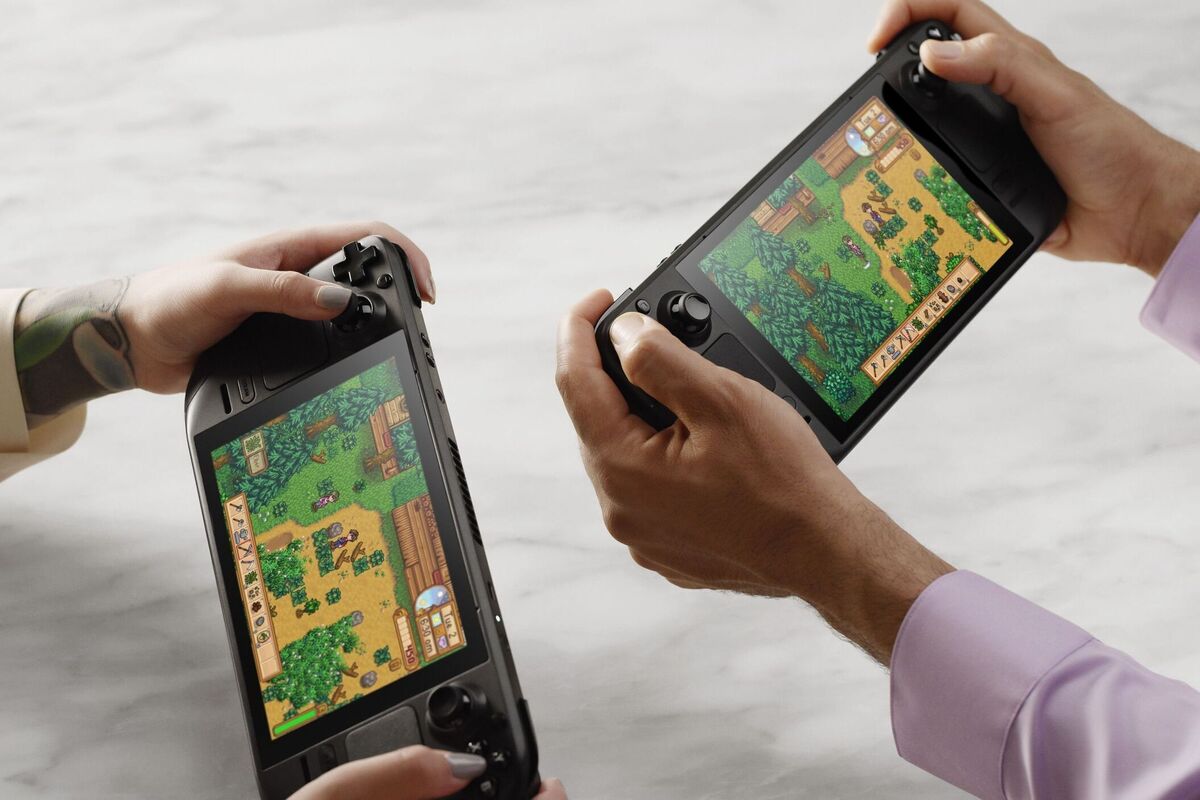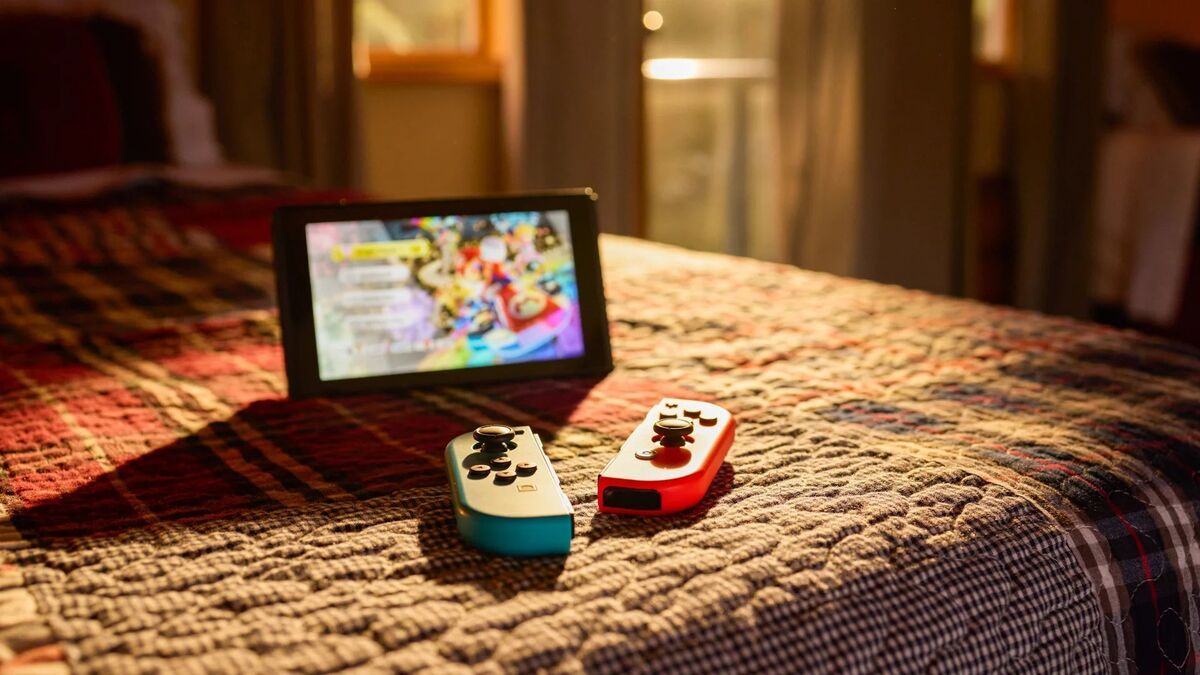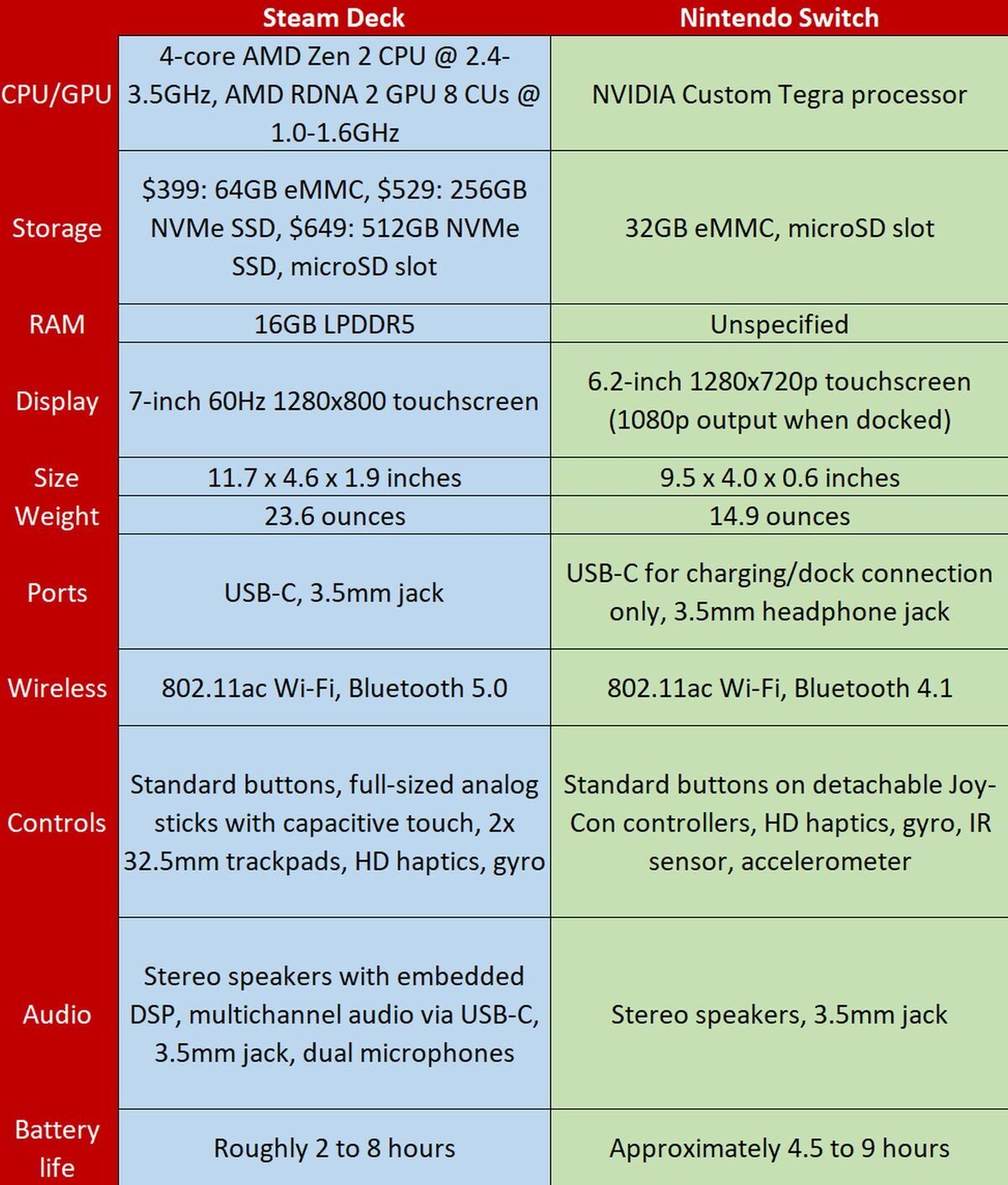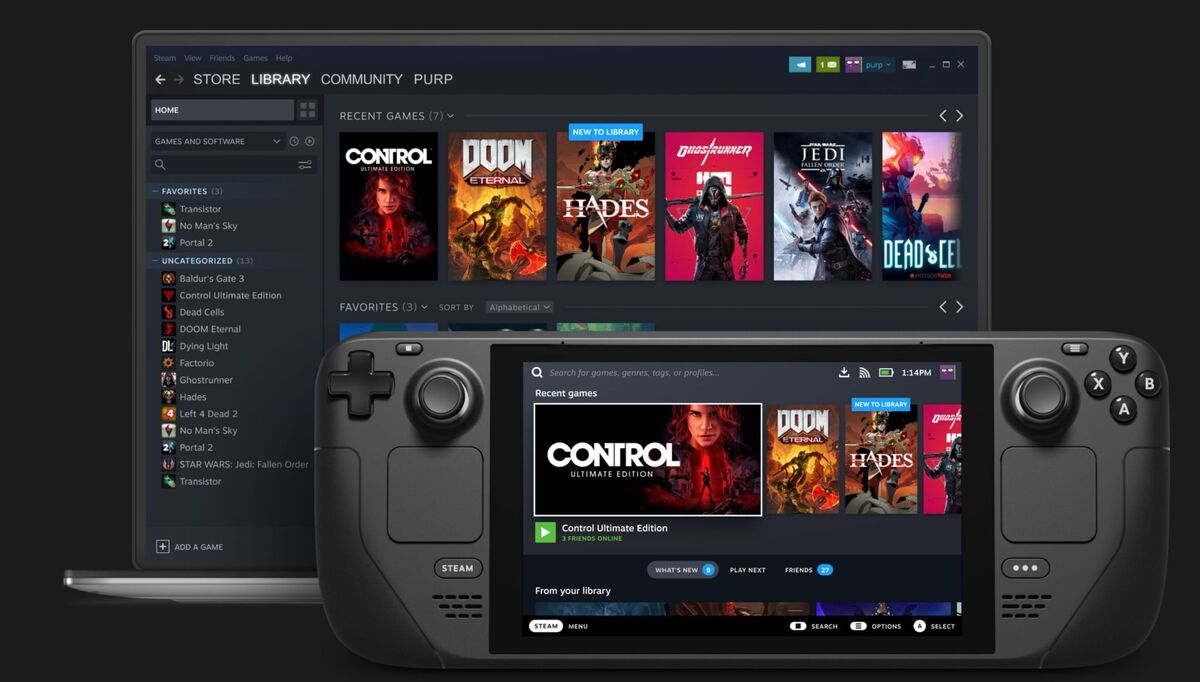
Valve Steam Deck vs. Nintendo Switch: Which gaming handheld should you buy?
You’ll often hear PC enthusiasts—including yours truly—say that the Nintendo Switch is the perfect companion console for your gaming rig, thanks to its handheld mode for on-the-go gaming, deep indie library, and access to Nintendo-exclusive games. The stickiness of that last benefit will soon be put to the test, as Valve’s newly announced Steam Deck handheld PC mimes the Switch form factor but revolves around your existing Steam account…and all the games already in it. Oh my.
In the battle of the Steam Deck vs. the Nintendo Switch, who comes out on top? We’ll take it to the tape below, but first let’s talk about what matters most: the games, and why the Steam Deck and Nintendo Switch might not even be true competitors at all.
Steam Deck vs. Nintendo Switch: The games
The $399 Steam Deck and $299 Nintendo Switch have two totally different gaming philosophies.
 Nintendo
NintendoThe Nintendo Switch and its detached Joy-Con controllers.
Like all recent Nintendo consoles, the Switch revolves around Nintendo’s popular first-party franchises—think Mario, Zelda, Animal Crossing, and so forth. It’s also leaned heavily into indie games that fit the handheld form factor. But if you don’t dig Nintendo’s own games, you probably won’t be interested in the Switch.
Valve’s Steam Deck exists to bring the deep, wide selection of PC games that are already on Steam to a new portable form factor. You probably wouldn’t whip out a gaming laptop to play Hades while riding a bus, but the Steam Deck would work wonderfully for that. The surprisingly powerful handheld PC should also be able to play most modern games pretty well (albeit possibly with some tweaking of graphical options) on its diminutive screen—Valve showed Control and Jedi: Fallen Order running on the device to display its prowess.
 Valve
ValveThe Valve Steam Deck
Big questions remain on how well Valve’s Proton compatibility layer will let Windows games run on the Steam Deck, especially multi-player titles that rely on anti-cheat software. Because the device is essentially a Linux PC in a funky form, tinkerers could also install Windows on it to eradicate potential headaches.
Retro emulation enthusiasts will no doubt fall in love with the Steam Deck as well. The hardware inside means that the Steam Deck can support more retro Nintendo games than the Switch itself with the proper software installed, which is absolutely wild.
At this point it should be clear that the Steam Deck and Nintendo Switch target two very different audiences, in broad strokes. The Nintendo Switch aims to please mass audiences, with a focus on family-friendly Nintendo games that you’ll have to buy new. The Steam Deck is built for PC nerds who already have deep existing Steam libraries or love to tinker. Which do you prefer? Which would be a better accompaniment to your existing gaming PC, assuming you have one? (This is PCWorld, after all.) Your decision on whether to buy the Steam Deck or the Nintendo Switch should hinge on that—not the hardware details we’re about to wade into.
Steam Deck vs. Nintendo Switch: The hardware
Because the games should be your guiding light, we’re going to leave most of the specification talk for the chart below. But let’s spend some time talking about the key hardware differences between the Steam Deck and Nintendo Switch. (Again: This is PCWorld.)
Both handhelds are rectangular devices with all the buttons and joysticks you’d expect, with roughly the same touchscreen specs: The 6.2-inch Switch display runs at 1280×720, while the 7-inch Steam Deck boasts a 1280×800 resolution. A new $350 Nintendo Switch model with a luscious OLED display and a bigger 7-inch screen will launch in October, but with the same resolution.
 Nintendo
NintendoMultiplayer fun with the Switch’s detached Joy-Con controllers.
One key difference? The Steam Deck includes two small touchpads underneath the joysticks. These are smaller-scale versions of the big touchpads on the now-dead Steam Controller, designed to make controlling mouse-focused games much easier after a decent learning curve. The Steam Deck also includes a built-in mic for voice communication. On the flip side, Nintendo’s detachable Joy-Con controllers and rear-side kickstand make it easy to set up on-the-fly split-screen battles against your buddies.
Nintendo’s handheld definitely wins the war of ergonomics. The Switch measures in at 9.5 x 4.0 x 0.6 inches and 14.9 ounces, while the Steam Deck tips the scales at 11.7 x 4.6 x 1.9 inches and 23.6 ounces. It’s…portly. You can comfortably play the Nintendo Switch for hours, but we’ll have to see if that holds true for the Steam Deck. The Steam Deck supports full Bluetooth connections, however, while the Switch (in a stunningly stupid decision) won’t let you connect Bluetooth headsets or controllers.
 Brad Chacos/IDG
Brad Chacos/IDGValve Steam Deck vs. Nintendo Switch, spec by spec.
Valve likely designed the Steam Deck as a chonker because of the powerful hardware inside. With a custom AMD APU powered by 3rd-gen Ryzen CPU cores and cutting-edge Radeon “RDNA 2” GPU cores, it should have no problem running many games at 60 frames per seconds, though you may need to dial some graphical options down in especially strenuous titles like Cyberpunk 2077. By comparison, the Switch’s aging ARM-based Nvidia Tegra processor runs games at only 30Hz while in handheld mode, and some games struggle to maintain that. The Steam Deck will likely provide a smoother-feeling gaming experience overall, especially as its AMD APU will be able to leverage Radeon’s speed-boosting FidelityFX Super Resolution feature if more games start to support the infant technology. The Switch’s Tegra chip does not support Nvidia’s rival DLSS technology.
Another Nintendo perk? Both the $299 Switch and the $349 Switch OLED Edition ship with a dock that lets you easily connect the handheld to your TV for some couch gaming. (There’s also a $199 Switch Lite that lacks docking capabilities.) Valve will ship a dock for the Steam Deck as well, but it’ll be an optional extra. On the plus side, as the Steam Deck is basically just a Linux PC, you’ll be able to use its USB-C port and wireless options to connect to a wide variety of devices, from TVs to monitors to even other PCs. The Steam Deck also supports Steam Remote Play, so you could run a game on your beefy gaming desktop and stream it to your Steam Deck on your couch for faster performance, which is pretty damned cool.
 Valve
ValveReally, it’s all about the games. Nintendo or Steam?
The Nintendo Switch ships only with tiny, slow eMMC flash storage inside, bolstered by an even slower microSD card slot for expanding capacity. The base configuration of the Steam Deck also comes with a microSD card slot and a pokey eMMC drive (albeit with 64GB, twice the capacity of the Switch), but you can spend more to get a version that uses a faster NVMe SSD like you’d find in a proper PC. Upgrading to that is pricey, though: You’ll need to spend $529 to get a “faster” NVMe SSD with 256GB of storage, or $649 to get the “fastest” SSD with 512GB onboard. Given the ballooning size of triple-A PC games, strongly consider stepping up to one of those if you can afford it. I’d strive to get as much storage as possible, personally.
Don’t let all this spec talk take your eyes off the prize. It’s all about the games. If you want a traditional game console brimming with Nintendo exclusives in a portable form factor, go for the Switch. (The Legend of Zelda: Breath of the Wild is pretty darn great.) But if the idea of bringing your Summer Sale-stocked Steam account on the road gets you hot and bothered, hold out for the Steam Deck. You can preorder it now but it won’t start shipping until December.
Stay connected with us on social media platform for instant update click here to join our Twitter, & Facebook
We are now on Telegram. Click here to join our channel (@TechiUpdate) and stay updated with the latest Technology headlines.
For all the latest Technology News Click Here
For the latest news and updates, follow us on Google News.

